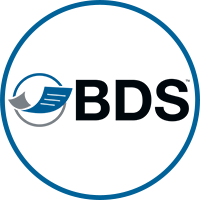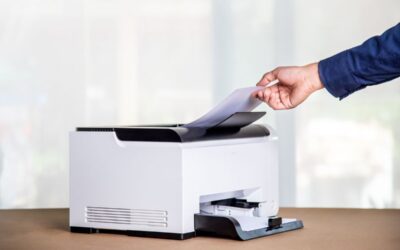Are you familiar with the term print production? Print production is the process of creating printed materials. If that seems vague, it is because print production can be flexible and mean different things to different businesses.
When you create documents that need to be printed, there is a phase that printers go through internally (which we refer to as print production) that allows us to print the materials. For instance, if you need to print unique business cards, there is a process the cards go through before printing.
Usually, the graphic design team creates the cards in adobe creative suite and sends them to production management to complete the print job. But what happens between the time the design is created and sent to the print shop?
The three stages of print production

We can break down the stages of print production into three different stages. Having a “flow” in print production will help ensure you can cater to every detail included in your design while securing supreme print quality.
The three stages we will explore today regarding the print production process are pre-press, press, and post-press.
Pre-press
When designers or production management mention “pre-press” concerning printed materials, they often refer to the process between printing the draft or layout of the design and the final print job.
When in this step of the process, you can expect to:
- Double-check the design file, format, fonts, and resolution to ensure it is up to standard with the final version you will eventually print.
- Perform a color test to ensure that the computer color (check out CMYK vs. RGB article) matches what your team wants on the final product.
- Format the art for printing and create a sample of the design.
This is a vital step in the print production process and requires great attention to detail and flexibility to ensure everything is accurate before going to press.
Press
Following the pre-press stage, we have, you guessed it, the press stage. When you hear the term “press” regarding print production, this refers to the printing stage. This stage is where the design you have perfected in the pre-press phase is transferred to the material you choose, depending on what you are printing.
This stage is a bit more nuanced than the other stages because there are different types of print options you can choose from, including:
- Lithography
- Letterpress
- Screen
- Gravure
Each type of press printing is designed to pair well with specific materials you may be printing. The process of this stage will be different for everyone during print production due to the different press options, but identifying this stage can help your overall understanding of print production.
Post-press
At this stage, you have finally made it! The post-press stage focuses on the final print after it has gone through the process of pre-press and press. For instance, if you print a booklet, this stage will involve correctly assembling the pages to be sorted in the correct order.
In this stage, you can expect the following:
- Physically folding, cutting, and binding any book materials.
- Trim, smooth, or round any business cards or marketing materials.
- Clean up the overall design of the image to make it look more aesthetically pleasing and accurate to the original design.
With the influx of technological advancements, there are ways to automate the post-press process, so you do not have to handle it physically. Although this innovative technology is helpful, it may only check some boxes.
For instance, with technology being so unpredictable, it can be challenging to gauge if the post-press process will involve as thorough of a “polishing” process as you could yourself. To be safe, it is advisable always to undergo an extra post-press process with a human to ensure everything is formatted and designed correctly.
What types of equipment are used in print production?
Print production requires powerful equipment built for speed, precision, and durability. Common machines include:
- Digital production printers: Ideal for short-run, on-demand, and variable data printing.
- Offset presses: Used for large-volume, high-quality commercial jobs.
- Wide-format printers: Perfect for banners, posters, and signage.
- Finishing systems, including cutters, folders, binders, and laminators, enhance the final product.
BDS offers sales, leasing, and service for a full range of production printing equipment tailored to your business size and output goals.
How does the digital printing process work?
Digital print production streamlines the process by sending files directly from a computer to the printer, eliminating the need for plates and lengthy setup.
Here’s how it works:
- A digital file (PDF, JPEG, etc.) is uploaded to printer software.
- The software manages layout, color calibration, and printing settings.
- The printer produces the document using toner or inkjet technology.
- Finishing processes (folding, trimming, and binding) are applied automatically or manually.
This method allows for faster turnaround times, personalization, and cost-effective short runs.
How can businesses benefit from in-house print production?
In-house print production enables companies to control quality, reduce outsourcing costs, and expedite project timelines.
Key benefits include:
- Cost savings on outsourced print jobs
- Faster turnaround times for marketing materials
- Improved document security and confidentiality
- Customization and flexibility for short-run projects
With BDS’s production printer leasing and service plans, businesses can implement in-house production printing for a fraction of the cost of outsourcing.
What features should I look for in a production printer?
When investing in a production printer, consider:
- Print speed (pages per minute)
- Paper capacity and media flexibility
- Color accuracy and resolution
- Duplex and finishing capabilities
- Workflow automation and integration with existing systems
BDS experts help you evaluate your volume requirements and workflow to recommend the most efficient model for your business — whether that’s a Kyocera TASKalfa Pro, Canon imagePRESS, Ricoh Pro, or Konica Minolta AccurioPress.






